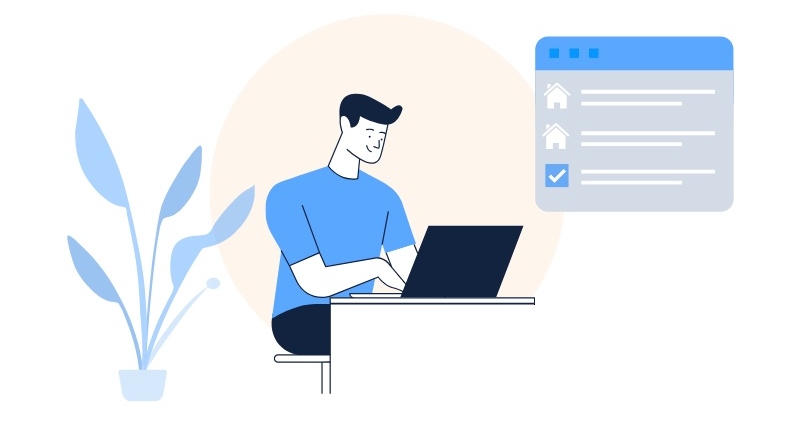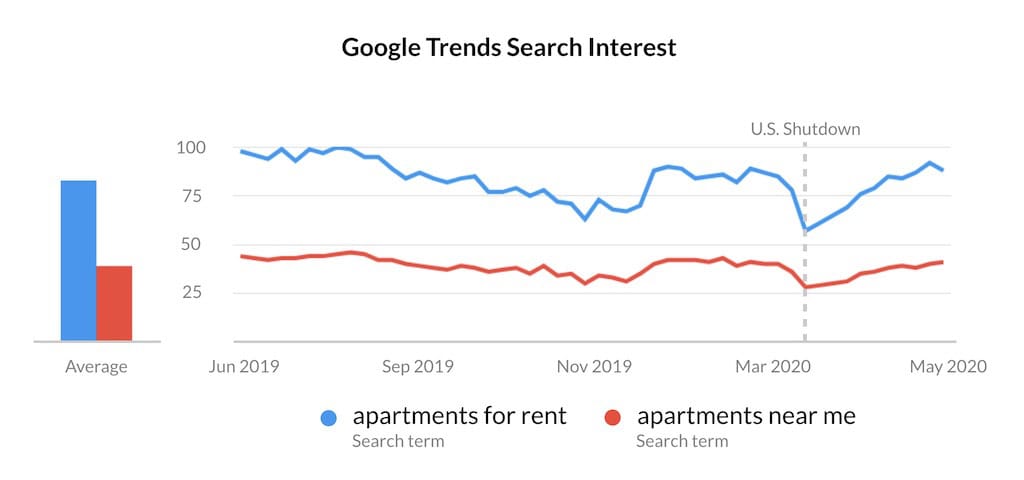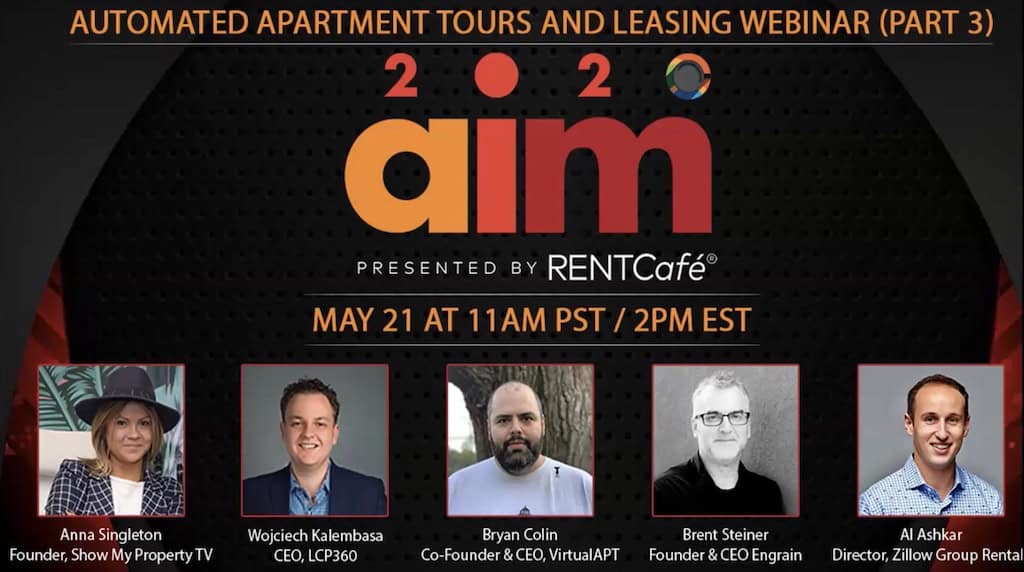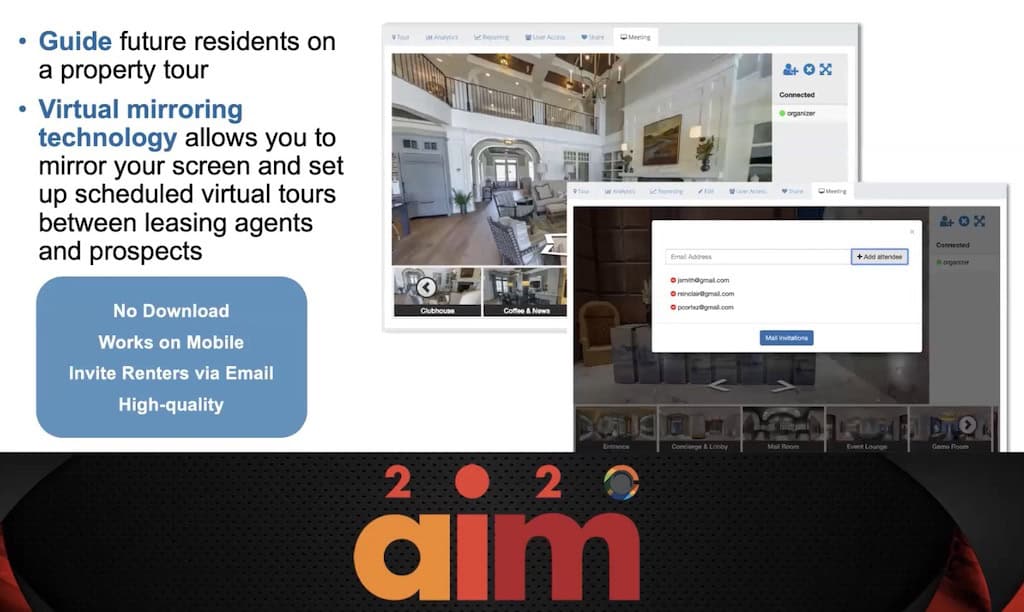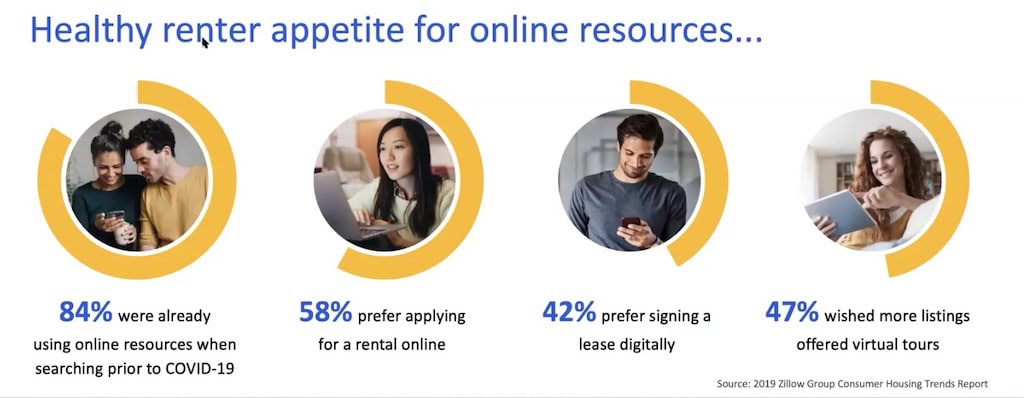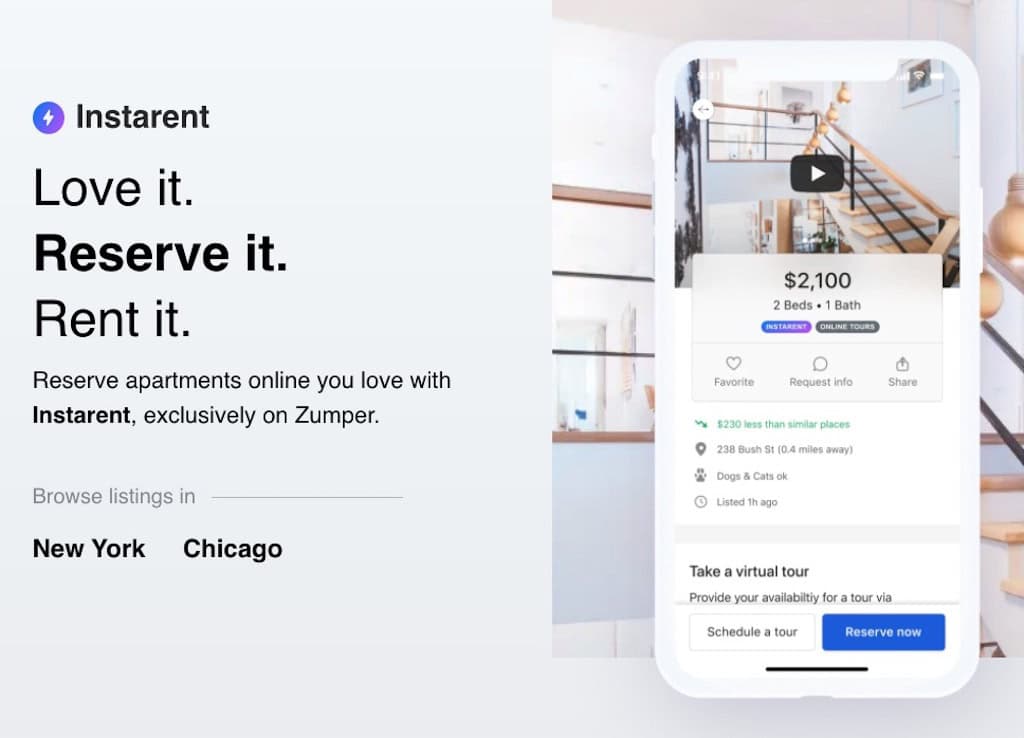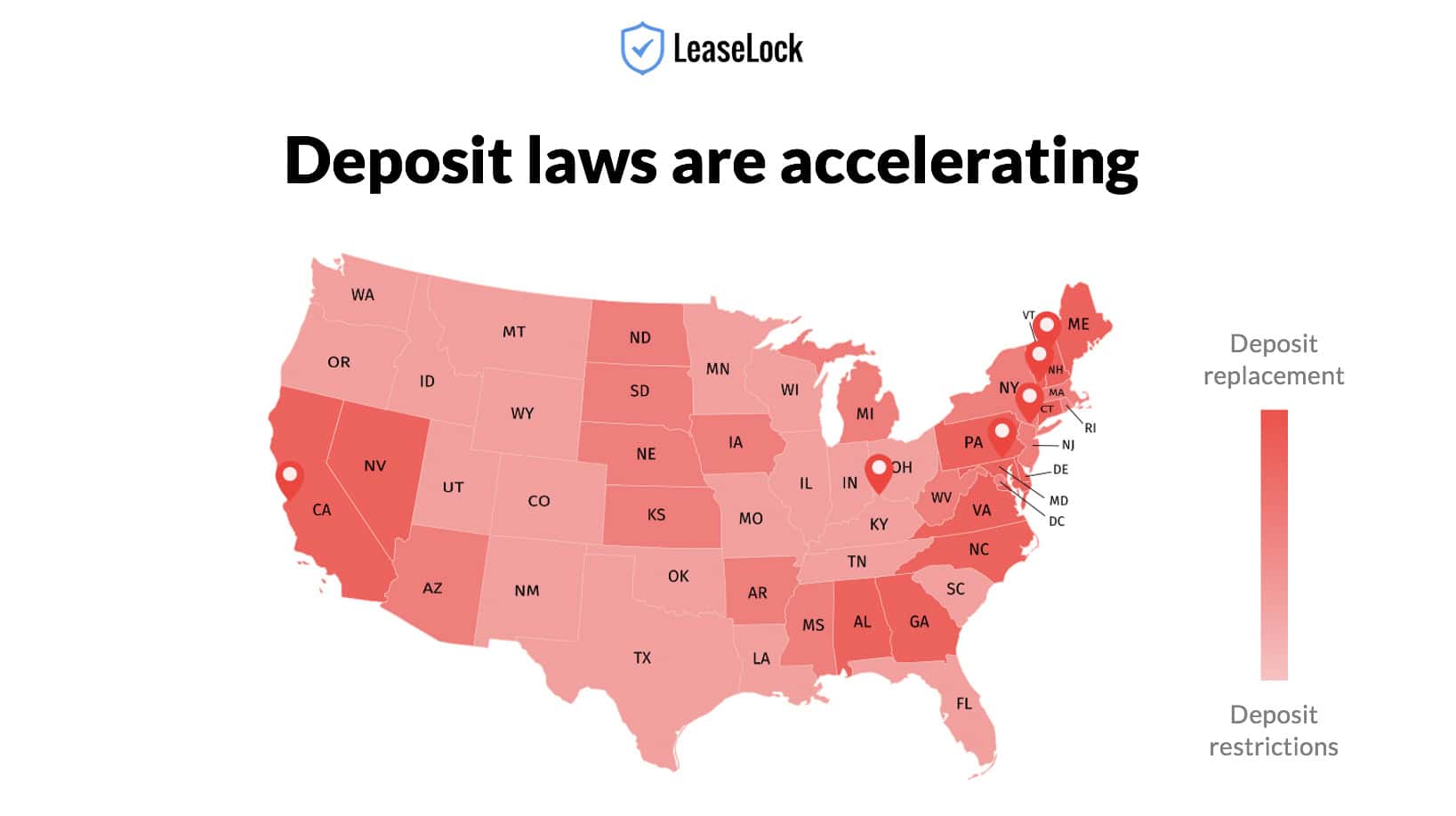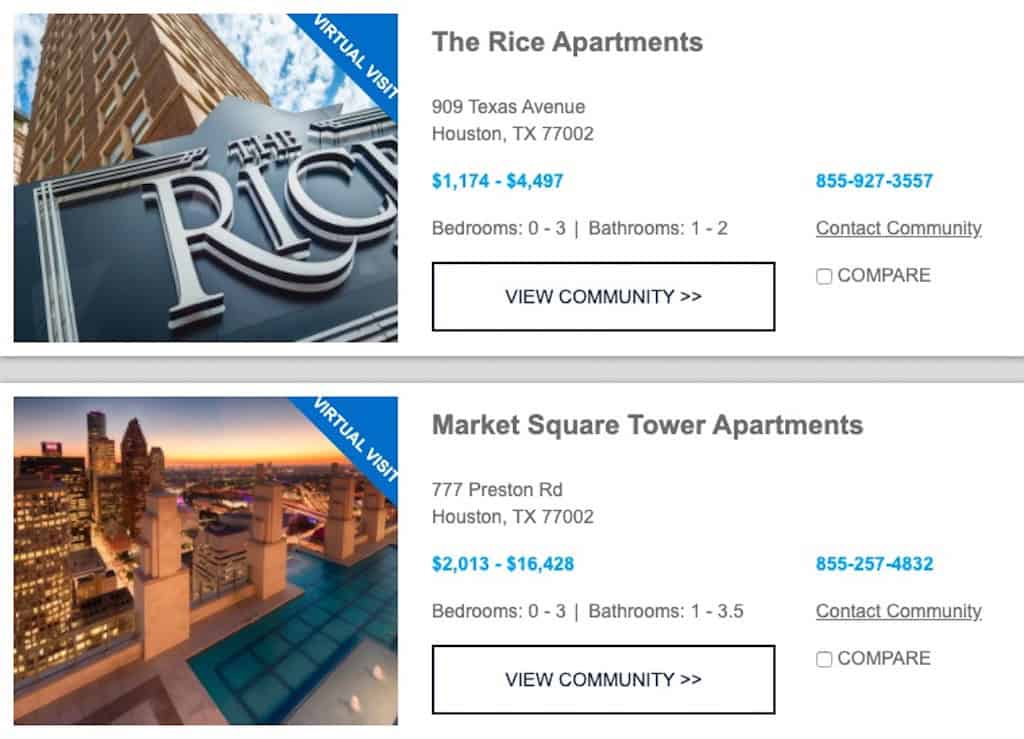Leasing Has Gone Digital — Here’s How to Create a One-Click, Online Apartment Leasing Experience
With the onset of COVID-19, we’ve been forced to adopt new routines, new processes, new ways of life. A combination of social distancing measures, remote work policies, school and restaurant closures, and a load of other lifestyle changes have led to an abrupt uptick in our reliance on technology. This trend has transformed apartment leasing in a short period of time, expediting the path to online apartment leasing.
While technology was already changing the multifamily landscape before the public health crisis struck, the growing challenges in apartment operations have accelerated technological innovation, pushing more operators toward digital leasing.
Apartment communities no longer have an option when it comes to implementing an online leasing experience—it’s the only way forward. Below, we explore key ways that COVID-19 has changed apartment leasing as well as how operators can create an online lease experience to keep up with the ever-evolving COVID-19 environment.
Multifamily’s Resilience Put To The Test During COVID-19
The COVID-19 crisis has tested multifamily, but the industry has proven to be resilient. For example, although experts predicted substantial drops in rent payments and lawmakers scrambled to cushion the fall, May rent payments have remained steady. Rent payment behavior will continue to be under close watch as the economy struggles, but the fundamental structure of how rent payments are processed has gone mostly unchanged.
On the apartment-hunting front, multifamily feared that renters would be less able and far less inclined to move, and therefore less likely to search for new apartments. A glance at Google Trends shows that search interest did indeed decline dramatically during the initial aftershock of shut-downs in mid-March, but a month later, apartment searches rebounded to pre-pandemic volume.
CoStar’s apartment listing platform tracked similar findings, with the most notable trend being an uptick in renters searching for apartments outside of their markets. RealPage also monitored leasing activity with rent roll data showing that executed new lease volumes matched the same time period in 2019.
In the leasing office, however, the market has turned toward full digitization and almost entirely remote operations. The strength of leasing has no doubt been put to the test, but it was already inching closer to online operations—COVID-19 has only accelerated the trend. We see five primary ways that apartment leasing is shifting toward online apartment leasing.
5 New Online Apartment Leasing Trends Due To COVID-19
The multifamily industry has gone digital in five key ways:
- Digital Webinars – Property management companies and apartment associations are hosting digital leasing webinars.
- Virtual Apartment Tours – Properties are holding live virtual tours.
- Digital Leasing Solutions – Rental marketplaces are responding to the market disruption by providing end-to-end digital leasing solutions for virtual leasing processes.
- Eliminate Deposits With Lease Insurance – Apartment operators are deploying lease insurance to provide a more affordable move-in and streamlined leasing for renters.
- Property Website Updates – Property managers are creating and updating property websites and online content.
In order to streamline online apartment leasing, we recommend investing in each of these digital trends.
1. Digital Leasing Webinars
Driving Leasing Traffic With Webinars
Multifamily professionals have turned to digital communication more than ever to stay abreast of the latest industry best practices. Perhaps most significantly, there’s been a boost in the amount of email announcements and online promotions for digital leasing webinars. This sudden spike in digital leasing webinars represents a major multifamily behavior shift toward digital operations that better prepares operators to conduct online apartment leasing.
Due to strict social distancing measures, apartment communities have had to find new ways or improve less familiar methods for driving leasing traffic. Thus, we’ve seen a massive influx of companies, associations, and other professionals hosting webinars on how to manage online apartment leasing.
Types of Leasing Webinar Content
Within these webinars, we’ve seen informational content on how leasing offices can operate while remote, understaffed, socially distanced, and dealing with market uncertainty. As apartment communities are forced to adopt new leasing measures, the flood of digital leasing webinars aim to educate operators and property managers on how to drive leases by leveraging social media marketing, conducting virtual tours, optimizing website content, texting prospects, and various other digital-first marketing tactics.
We’re also seeing more industry thought leaders using webinars to inform operators about the new leasing landscape, including live webcasts on apartment searches, website traffic, rent payments, rent growth, market outlooks, and various other industry news. This has enabled professionals to share critical knowledge on how to improve online leasing practices while the industry combats a total disruption to their normal operations.
For example, the NMHC and NAA hold regular webinars recapping findings about the state of multifamily, and apartment associations host educational webinars about new legislation in light of COVID-19. All these digital leasing webinars ultimately help property management staff adapt and improve their leasing operations.
2. Virtual & Live Online Apartment Tours
Automated Apartment Tours & Leasing Operations
Unsurprisingly, property management companies have taken to online and virtual tours in order to sustain and drive more digital leasing traffic. As prospects and leasing staff abide by tight social distancing measures, there’s a pressing need to remove in-person meetings and instead conduct virtual tours. Whether pre-recorded or shown via live video conferences, online apartment leasing is likely to become a permanent practice even after the pandemic.
Benefits of Virtual Leasing
Online and virtual leasing, while perhaps new to many leasing offices, helps improve several aspects of the leasing process. Because leasing staff can give prospects a virtual tour in near on-demand fashion, properties have the potential to generate higher lead-to-lease conversion rates. Hosting live online tours also allows multiple prospects to watch at once as opposed to scheduling several in-person tours over multiple days. This can make the leasing cycle much more efficient.
AvalonBay Communities reported March leasing volume down 40% from the previous year but COO Sean Breslin noted, “In April, however, as a result of our teams becoming more proficient with virtual or no-contact tours, prospective residents becoming more comfortable venturing out to tour apartment homes and the various incentives we offer to increase conversion rates, leasing velocity rebounded.”
Secondly, virtual apartment tours enable leasing staff to show every floor plan and unit, meaning they can pre-lease occupied units or units under construction. Lastly, advertising efforts are bolstered by the increase in video assets. Video content with virtual tour footage makes email, paid, and social advertising content more engaging which helps improve conversion rates.
3. Digital Leasing Solutions & Virtual Leasing Processes
While 84% of renters were already relying on online resources to search for new homes before the pandemic, the new technologies offered by apartment listing sites such as Zillow and Zumper signal a major shift toward bringing the entire apartment leasing process online.
Zillow Launches New Online Leasing Technology, Zillow Rentals
In the end of April, Zillow launched a digital suite of services including 3D Home Tours, unlimited applications for one low fee, and a rent payment portal to support the online rental transaction. Their new tools enable renters to search, find, apply for, and lease digitally from the safety and comfort of their home. Additionally, the new lease uploader and online signing tools allow property managers to quickly upload existing lease forms and send it to their renter to review and sign electronically.
Zumper Releases New Digital Leasing Solution, Instarent
As COVID-19 changes the rental environment, Zumper discovered that 80% of renters are likely to lease a property that they have only toured virtually, suggesting a huge opportunity for online-only lease experiences.
Shortly after Zillow released its new leasing technology, Zumper announced the launch of its own virtual leasing solution. Instarent helps renters and property owners adjust to the “new normal” by streamlining the digital leasing process. While only available in New York City and Chicago, the tool reduces the amount of time it takes to sign a lease. Renters can find, reserve, apply for, and lease apartments all within 24 hours. The new features also give property owners the ability to list properties for rent with professional photography, video content, and virtual touring capabilities.
4. Eliminate Deposits With Lease Insurance to Streamline Lease Transaction
Apartment Operators Eliminate Deposits to Provide More Affordable Living Options for Renters & Increase Conversions
We’re also observing more properties invest in creating a modern, one-click leasing experience to make move-ins more affordable and streamline leasing to generate higher conversions. Security deposits pose large upfront costs, and many friction points in the leasing process are magnified and drawn-out when carried out entirely online. So, operators are looking to make leasing as frictionless as possible by removing barriers to closing a lease. Traditional security deposits require upfront payment and administration, and deposit alternatives like surety bonds require additional approvals—all of which present particularly cumbersome sources of friction, especially when they need to be handled remotely.
Lease insurance wraps around the existing leasing process, is fully integrated with major property management systems, and completely eliminates security deposit payments and additional upfront approvals. This reduces the number of steps required in the online leasing process while making move-ins more affordable for renters. Not to mention, lease insurance provides better protection against unexpected events and market disruptions.
Recent deposit legislation is also accelerating this trend, signaling an industry-wide movement towards total deposit replacement. By eliminating security deposits, apartment owners can thrive in the new digital environment with a seamless, affordable, and modern, one-click leasing experience.
5. Property Website Updates & Optimization
Residents Rely On Property Websites For Apartment Searches
The increase in online leasing practices means property websites need to be even more diligently updated and optimized. The 2020 NMHC/Kingsley Apartment Resident Preferences Report found that 80% of residential prospects will visit a property website while apartment hunting. While prospects were already in the habit of checking property websites for information and visual reference pre-COVID, there’s been a boost in online searches and thus, website traffic.
Properties Need to Update Site Content
In the face of surging site traffic, properties must ensure their website content is kept up-to-date, professional, and optimized for search. Properties should have updated descriptions about the neighborhood, social activities, and amenities offered, as well as positive resident reviews. The site should feature professional photography, and site content should be optimized so that search engines understand and display the property’s site in targeted search results.
Properties Need To Perfect The Online Apartment Leasing Experience
COVID-19 has pushed the multifamily industry into the digital leasing era faster than most were perhaps willing to accept, but the opportunities for properties to refine and revamp their leasing operations are now ample. The market will favor those transitioning to full or mostly online apartment leasing, as the rental landscape is quickly heading in the direction of a fully touchless leasing experience. This means apartment owners and operators, as well as property managers, must embrace the technology that modern renters and market factors demand.
